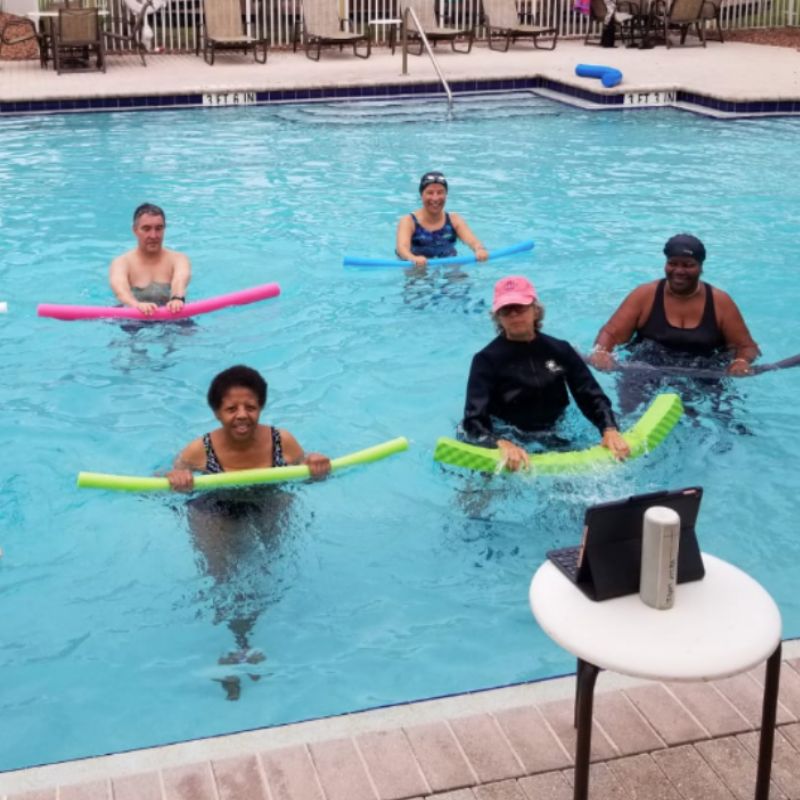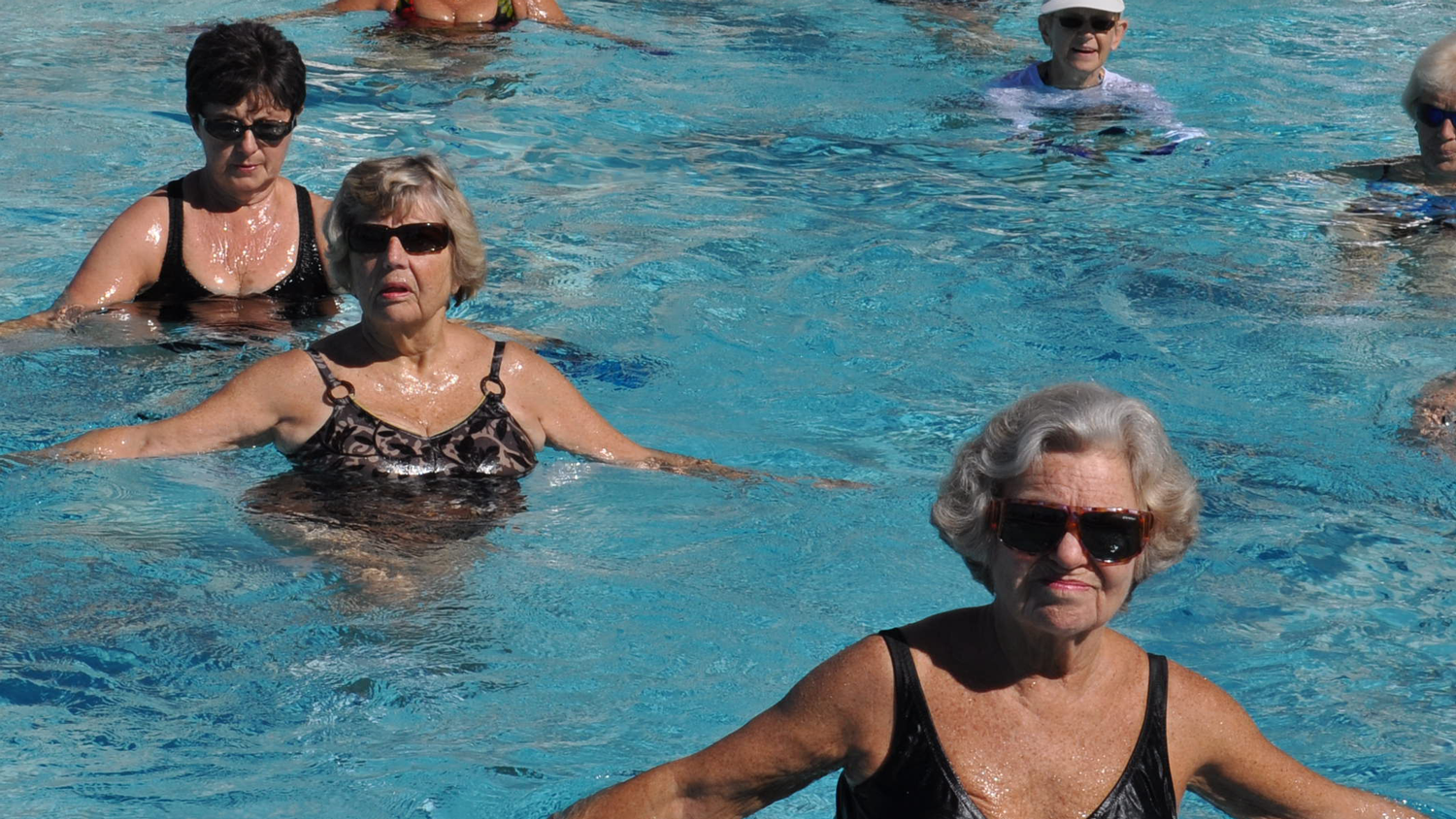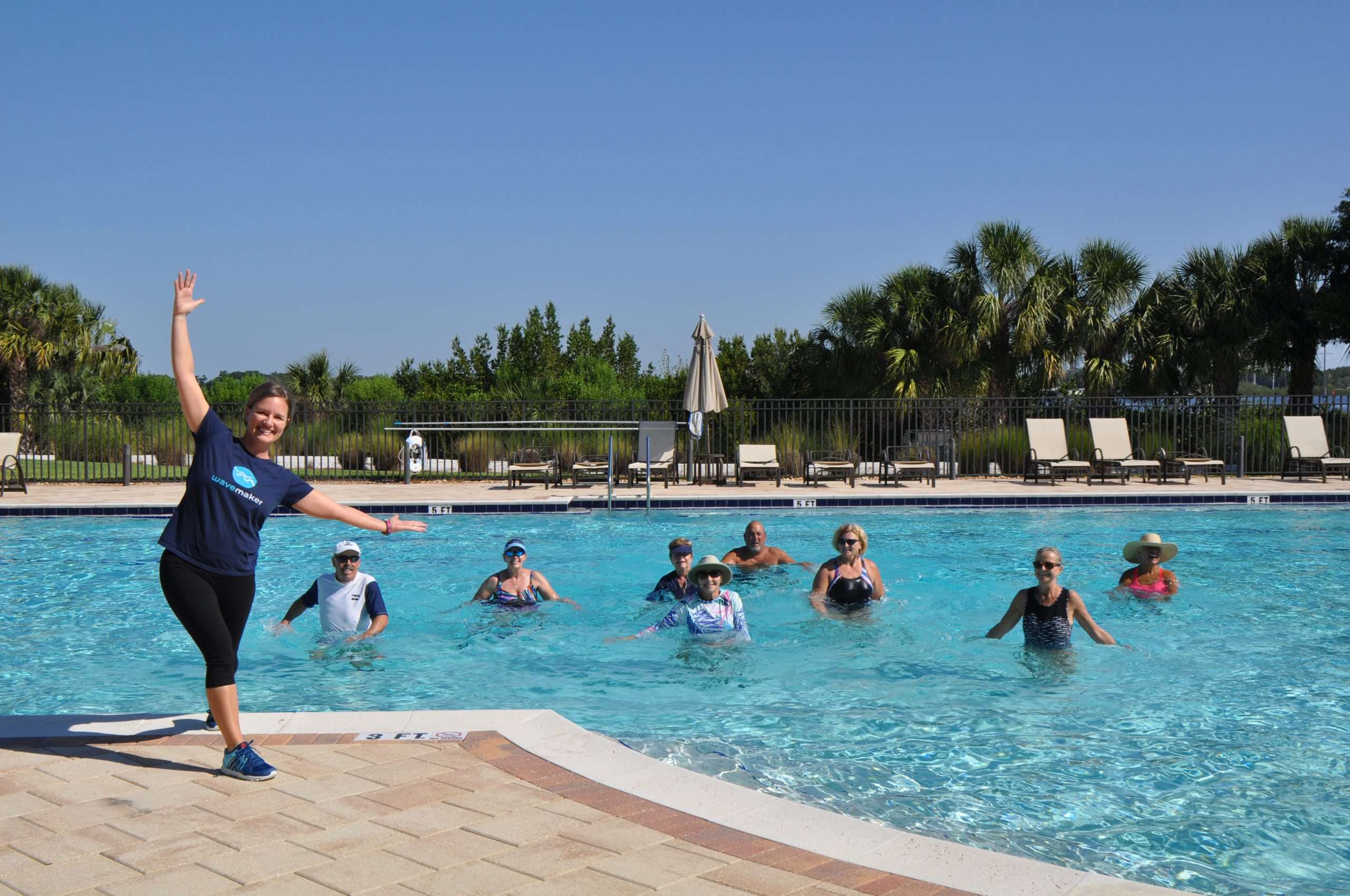So many people—too many people—approach water exercise thinking the only way to get meaningful results is by using all the gear; foam dumbbells, pool noodles—the bigger the better. If you were on land, you’d almost certainly never pick up a 20-pound weight before proficiently lifting a 5-, 10-, and then 15-pound weight. But when it comes to pool equipment, we skip over the important progressions right to the biggest equipment out there.
But what if I told you the best way to get lasting and impactful results from your water exercise is to use the one tool we all have available to us: the water itself?
I remember learning this lesson over 30 years ago; our equipment back then was milk jugs for ab work and noodles for conditioning, but we spent most of the time with our noodles out of the pool, mostly overhead. It wasn’t until my first instructor education course that I was introduced to arms under water 100% of the time.

I can still remember the feeling—the pushing up and down and right and left and circling around the body. It was relaxing, invigorating, challenging; it was everything built into one. And I was thinking, why are we spending so much time waving our arms overhead when we have this beautiful resistance around us, this tool in the water?
In case you’re still waving arms overhead like I was, let’s look at the properties of water. We’ve got two kinds: hydrostatics—things that are always present like buoyancy and hydrostatic pressure; and hydrodynamics—the principles that affect the body when moving.
In this blog we’ll cover part one and in the next blog we’ll cover part two.
The Benefits Of Using The Water
Buoyancy
When we think of water exercise, oftentimes the last thing we think about is the water itself. And that’s a really big surprise, because when people come to the pool they come for the water; when you’re immersed in water, your joints are offloaded—you feel light, it’s easier to move, and the difficult or impossible things on land become possible. That’s buoyancy.
Whether you’re moving or not, whenever you’re in water, buoyancy is present. Because of buoyancy—which constantly lifts us up—gravity—which constantly pushes us down—is no longer the overwhelming force. And as buoyancy lifts us up, you can feel it reducing the compression and the weight-bearing of the immersed joints.

Pain relief
When you work on mobility underwater, immediate relief from pain can be felt. Whether it’s a knee that has arthritis, a hip that’s been replaced, or a spine that has spondylothesis, whatever it might be, people with pain flock to the water because the simple nature of being in water reduces pain; our bodies feel better when we offload the joints, which allows us to go through a bigger range of motion. It’s a win-win.
Hydrostatic Pressure
Hydrostatic pressure is a compressive force, which is roughly the same amount of force as having 12 ace bandages wrapped around you. That compressive force causes a slight desensitization of our body, which means we have a higher threshold to pain.
If you have a joint replacement coming up and pain is keeping you from moving, slip in the pool and work on strengthening in a way that feels good, with your joints naturally offloaded. The stronger you are going into surgery, the faster your recovery.
Immersion
Simply standing in water has amazing benefits. The buoyancy and hydrostatic pressure alone are enough to relax the body, improve circulation and start the healing process.
So the next time you’re in the pool, take 5 minutes and just stand in the water. Go as deep as you comfortably can, close your eyes, and breathe. Feel the ribs expand as you work against the hydrostatic pressure to strengthen your breathing muscles.
How to get the best results from your water exercise

It’s true: we don’t need equipment to make things more challenging, we just need to simply use the water. To really get the feel for moving in the water, wear gloves—this will give you a direct connection to the water; close your eyes—remove visual input and focus on the feeling of your joints and muscles; and take the time to explore each exercise paying attention to how the body responds.
When you’re ready to dive in, try this warm-down from my workout, Skip to Better Balance—this routine starts with shoulder strengthening and progresses to a hip hinge. Imagine this like picking up the laundry or golf ball, doing some gardening, anything where you’re bending, tilting the body forward, and lifting something to upright.
And come join me inside Wavemakers where it’s my mission to get you your best results.
